Cell microparticles loaded with tumor antigen and resiquimod reprogram tumor-associated macrophages and promote stem-like CD8+ T cells to boost anti-PD-1 therapy
- PMID: 37704614
- PMCID: PMC10499806
- DOI: 10.1038/s41467-023-41438-9
Cell microparticles loaded with tumor antigen and resiquimod reprogram tumor-associated macrophages and promote stem-like CD8+ T cells to boost anti-PD-1 therapy
Abstract
The durable response rate to immune checkpoint blockade such as anti-programmed cell death-1 (PD-1) antibody remains relatively low in hepatocellular carcinoma (HCC), mainly depending on an immunosuppressive microenvironment with limited number of CD8+ T cells, especially stem-like CD8+ T cells, in tumor tissues. Here we develop engineered microparticles (MPs) derived from alpha-fetoprotein (AFP)-overexpressing macrophages to load resiquimod (R848@M2pep-MPsAFP) for enhanced anti-PD-1 therapy in HCC. R848@M2pep-MPsAFP target and reprogram immunosuppressive M2-like tumor-associated macrophages (TAMs) into M1-like phenotype. Meanwhile, R848@M2pep-MPsAFP-reprogrammed TAMs act as antigen-presenting cells, not only presenting AFP antigen to activate CD8+ T cell-mediated antitumor immunity, but also providing an intra-tumoral niche to maintain and differentiate stem-like CD8+ T cells. Combination immunotherapy with anti-PD-1 antibody generates strong antitumor immune memory and induces abundant stem-like CD8+ T cell proliferation and differentiation to terminally exhausted CD8+ T cells for long-term immune surveillance in orthotopic and autochthonous HCC preclinical models in male mice. We also show that the R848-loaded engineered MPs derived from macrophages overexpressing a model antigen ovalbumin (OVA) can improve anti-PD-1 therapy in melanoma B16-OVA tumor-bearing mice. Our work presents a facile and generic strategy for personalized cancer immunotherapy to boost anti-PD-1 therapy.
© 2023. Springer Nature Limited.
Conflict of interest statement
The authors declare no competing interests.
Figures

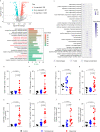
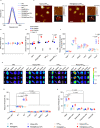
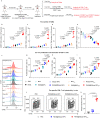
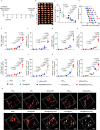
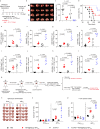
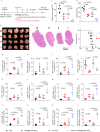

Similar articles
-
Boosting anti-PD-1 therapy with metformin-loaded macrophage-derived microparticles.Nat Commun. 2021 Jan 19;12(1):440. doi: 10.1038/s41467-020-20723-x. Nat Commun. 2021. PMID: 33469052 Free PMC article.
-
Thermosensitive Resiquimod-Loaded Lipid Nanoparticles Promote the Polarization of Tumor-Associated Macrophages to Enhance Bladder Cancer Immunotherapy.ACS Nano. 2025 Jun 3;19(21):19599-19621. doi: 10.1021/acsnano.4c17444. Epub 2025 May 17. ACS Nano. 2025. PMID: 40380939
-
Polymeric nanocapsules loaded with poly(I:C) and resiquimod to reprogram tumor-associated macrophages for the treatment of solid tumors.Front Immunol. 2024 Jan 8;14:1334800. doi: 10.3389/fimmu.2023.1334800. eCollection 2023. Front Immunol. 2024. PMID: 38259462 Free PMC article.
-
Tumor-associated macrophages and CD8+ T cells: dual players in the pathogenesis of HBV-related HCC.Front Immunol. 2024 Oct 10;15:1472430. doi: 10.3389/fimmu.2024.1472430. eCollection 2024. Front Immunol. 2024. PMID: 39450177 Free PMC article. Review.
-
Current Strategies for Modulating Tumor-Associated Macrophages with Biomaterials in Hepatocellular Carcinoma.Molecules. 2023 Feb 27;28(5):2211. doi: 10.3390/molecules28052211. Molecules. 2023. PMID: 36903458 Free PMC article. Review.
Cited by
-
Lactylation-driven molecular taxonomy of melanoma: linking epigenetic modifications to immune evasion and clinical outcomes.Am J Cancer Res. 2025 Jul 15;15(7):2911-2931. doi: 10.62347/WJNA8774. eCollection 2025. Am J Cancer Res. 2025. PMID: 40814376 Free PMC article.
-
Tumor-associated macrophages within the immunological milieu: An emerging focal point for therapeutic intervention.Heliyon. 2024 Aug 23;10(17):e36839. doi: 10.1016/j.heliyon.2024.e36839. eCollection 2024 Sep 15. Heliyon. 2024. PMID: 39281573 Free PMC article. Review.
-
Bioengineered therapeutic systems for improving antitumor immunity.Natl Sci Rev. 2024 Nov 12;12(1):nwae404. doi: 10.1093/nsr/nwae404. eCollection 2025 Jan. Natl Sci Rev. 2024. PMID: 40114728 Free PMC article. Review.
-
Nano drug delivery systems for advanced immune checkpoint blockade therapy.Theranostics. 2025 Apr 13;15(11):5440-5480. doi: 10.7150/thno.112475. eCollection 2025. Theranostics. 2025. PMID: 40303342 Free PMC article. Review.
-
Targeted nanoparticle delivery system for tumor-associated macrophage reprogramming to enhance TNBC therapy.Cell Biol Toxicol. 2025 Mar 8;41(1):58. doi: 10.1007/s10565-025-10001-1. Cell Biol Toxicol. 2025. PMID: 40056273 Free PMC article.
References
Publication types
MeSH terms
Substances
LinkOut - more resources
Full Text Sources
Medical
Molecular Biology Databases
Research Materials

